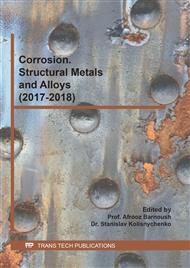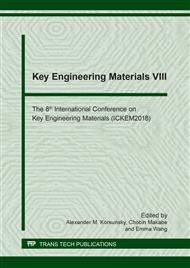p.408
p.419
p.427
p.434
p.441
p.448
p.454
p.459
p.466
High-Temperature Corrosion of Ni3Al+ 2.9%Cr Alloy in Ar-0.2%SO2 Gas
Abstract:
The high-temperature corrosion behavior of Ni3Al+2.9 wt% Cr alloy was studied in SO2-containing environment. Corrosion tests were carried out at 900, 1000, and 1100 °C for 100 h in atmospheric Ar-0.2% SO2 gas. The alloy corroded relatively slowly due mainly to formation of Al2O3 in the scale. Its corrosion kinetics deviated from the parabolic corrosion rate law to a certain extent owing to ensuing scale spallation. This was attributed to (1) stress generated during scaling and the subsequent cooling period, (2) voids that formed due to the Kirkendall effect, and (3) incorporation of sulfur in the scale. The scale that formed after corrosion at 900 °C consisted of the outer NiO scale, middle NiAl2O4 scale, and inner Al2O3 scale. The increased corrosion rate at 1000 and 1100 °C led to formation of the outer NiO scale, and inner Al2O3 scale.
Info:
Periodical:
Pages:
441-447
Citation:
Online since:
August 2018
Authors:
Keywords:
Price:
Сopyright:
© 2018 Trans Tech Publications Ltd. All Rights Reserved
Share:
Citation:



